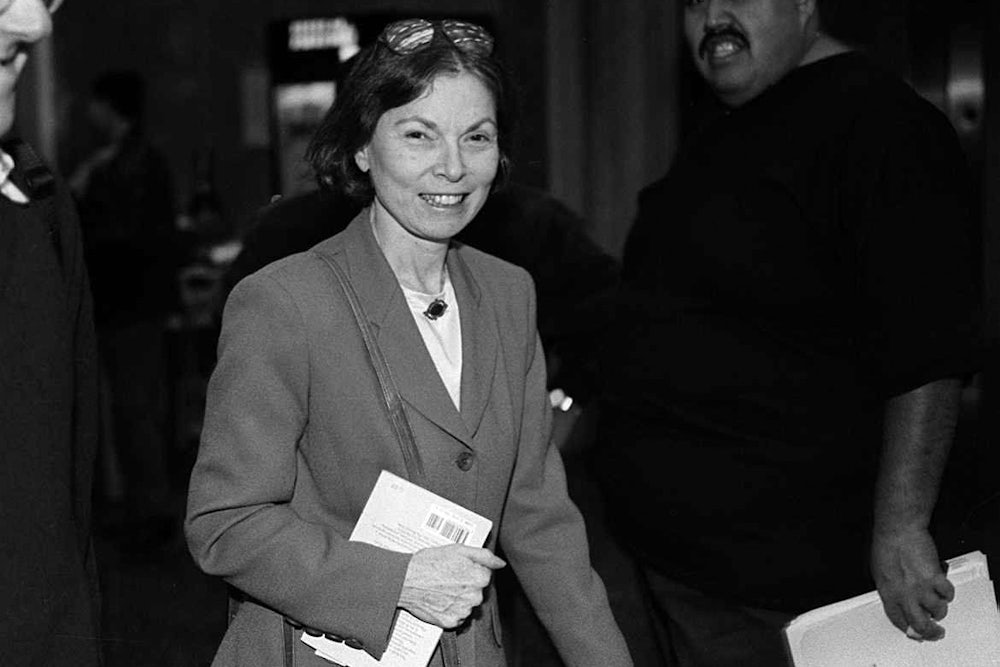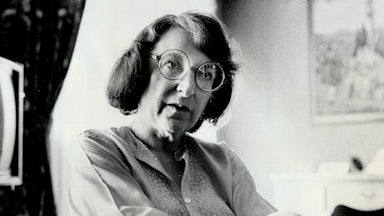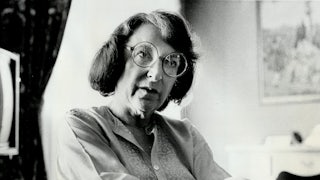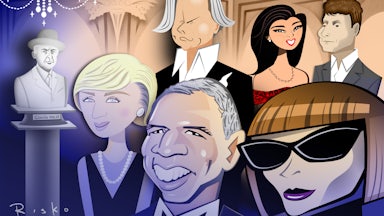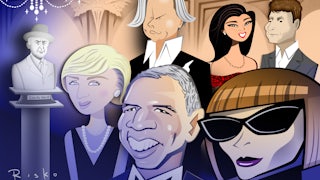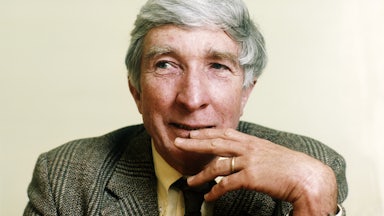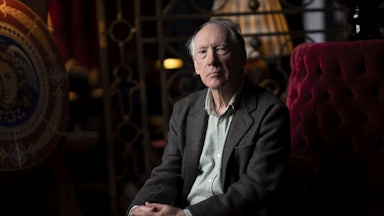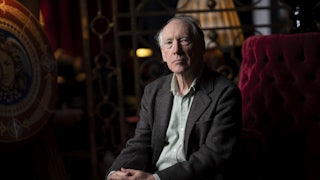Paper Trail
In the fall of 2019, on my first visit to Yale University’s Sterling Memorial Library, an exhibition of Janet Malcolm’s writings, curated by Eve Sneider, lined the corridor leading to the rare books and manuscripts room. Perhaps it was serendipity, or perhaps it was fate, but it certainly felt eerie, as Malcolm’s specter loomed large over the book project I was at the library to research—then titled, in a less-than-subtle homage, The Convict and the Conservative.
The influence of Malcolm, who died of lung cancer on June 17, hovers over almost every journalist I know and admire, but particularly among those writing crime nonfiction, as I do. Spending our time probing the worst of human behavior, expecting people to bare their souls about the worst things that happened in their lives, how could we not view our work as morally indefensible, and our techniques, as Malcolm wrote, akin to those of “confidence men”?
The oft-quoted opening passages of The Journalist and the Murderer caused considerable ruckus when first they appeared in The New Yorker, Malcolm’s most frequent magazine home, in 1989. (Knopf published the book version the following year.) It was as if journalism was the Wizard of Oz and Malcolm had pulled back the curtain, instantly diminishing its status. Three decades on, the bombast of those opening sentences remains potent, but if they carry less weight, it’s because time, the internet, and social media have diminished journalism’s status aplenty.
Revisiting the book for this essay, I was struck anew at Malcolm’s damning portrayal not only of the titular characters, the journalist Joe McGinniss (whom Malcolm outlived by seven years) and the murderer Jeffrey MacDonald (still in prison, still proclaiming his innocence in the deaths of his wife and daughters), but of nearly everyone in their orbit: the lawyers, other journalists, and the two writers who testified in McGinniss’s defense at his libel trial, Joseph Wambaugh and William F. Buckley Jr. (the aforementioned “Conservative”).
Reading their justifications for bending the truth with sources was a reminder that the writer-subject relationship need not be adversarial and could be marked with compassion but that, so often, the trap is set, and very few of us—Malcolm included— fail to fall into its clutches. The Journalist and the Murderer works as a case study of one such journalist and one such murderer, but it is a masterpiece precisely because it is about the interplay between and intersection of journalists and murderers, plural. Both groups have much to gain and even more to hide by encountering one another.
This may be why, in my annual reread of The Journalist and the Murderer, I keep searching out the Janet Malcolm she sought to hide from the public, even though I almost never find it there. The magazine pieces and books reflect, often brilliantly, her curiosity about subjects ranging from literary biography to conceptual art, from Eileen Fisher to the Gossip Girl novels, from photography to psychoanalysis. There is a careful facade in Malcolm’s work; her authorial “I” must shield itself from the reader even as it probes its subjects with merciless precision.
So my search moves elsewhere: to Malcolm’s impulsive decision to write about Sheila McGough and her legal and criminal tribulations, only to grow exasperated over the course of what became The Crime of Sheila McGough. To the somewhat puzzling decision to cover the case at the center of Iphigenia in Forest Hills, memorable mainly for the line “courtrooms are temples of waiting.” Or to her underlying motivation for writing The Silent Woman, as a treatise not just on biographies of Sylvia Plath but on literary biographies as a whole.
Then even further afield, to the collages Malcolm created and sold throughout her life; to her warm friendship with editor Robert Gottlieb, described in his 2016 biography, Avid Reader; and to her thorny relationship with Judaism, suppressed when five-year-old Jana Wienerova landed in New York, having fled Prague with her parents in 1939, and became Janet Winn, only to reemerge later in life.
When I find a glimpse of her, it’s in the corridor of Sterling Memorial Library. One of the letters on display as part of “The Courtroom, the Couch, and the Archive” is from Malcolm to Philip Roth. It’s undated, but likely from the mid-1990s, when Roth was in the midst of an acrimonious divorce from Claire Bloom, and Malcolm was effusive in her support. Then, below, a handwritten postscript from December 2012: “What a ridiculous letter! The man gives nothing … he is completely selfish and manipulative. How taken in I was.”
I thought of Malcolm’s postscript often in recent months. The sense of betrayal, the friendship ruptured, and what it says about her ability to judge and see what was in front of her. None of us are infallible, nor can we be. But because Janet Malcolm saw the world through her own idiosyncratic lens, she taught legions of artists, writers, journalists, and thinkers to see beyond what was expected to something wholly new.
—Sarah Weinman
On the Couch
Everyone has their favorite Janet Malcolm. Mine is Psychoanalysis: The Impossible Profession, her second book, which came out in 1980. Having spent 10 years on the couch—one five-year stint in the 1990s and a second in the 2000s—I’ve always been struck by popular misconceptions of psychoanalysis. People get their view of it from the movies or, if they’re academics, from literary theory. They see analysis as a higher form of therapy, more cerebral and intellectual than the talk versions people do once a week.
Malcolm shows us how distorted that view is. Psychoanalysis is more surgery than seminar. It’s not a humanistic practice of subject formation, in which analysands attain consciousness and control through insight and knowledge. It’s a radical, and alienating, experience of objectification, in which the patient is acted upon. She is thrown onto an ancient battlefield, where she must shadow box with enemies seen and unseen. Then something happens to her; professionals call it structural transformation. The battlefield lifts, like a stage ascending in the air, and the enemies disappear, without the patient knowing how or why. “Aaron Green,” the pseudonym Malcolm gives to the psychoanalyst at the center of her profile, compares the experience to Shakespeare:
At the end of A Midsummer’s Night Dream, the human characters wake up and rub their eyes and aren’t sure what has happened to them. They have the feeling that a great deal has occurred—that things have somehow changed for the better, but they don’t know what caused the change. Analysis is like that for many patients.
What Malcolm is also describing, through Green, is the experience of art, a topic she wrote about frequently but from which she took pains to distance herself. Like Orwell, who thought Homage to Catalonia would have been a good book had he not turned it into journalism, Malcolm described her writing as a failure of art. Only writers who invent, she said, can write autobiographies. Journalists like her could not. They lacked the ability to make themselves interesting. The light of their work was powered, almost entirely, by the self-invention of their subjects.
Malcolm’s self-effacement, of course, was a pose, one of the many she would strike as she sought to find her way into a story. In The Journalist and the Murderer, she made herself into an object of fascination, a villain who seduces her subject only to strip him and rob him blind. In “Thoughts on Autobiography From an Abandoned Autobiography,” she claimed to be so lacking in luster that she could scarcely tolerate being alone in a room. Malcolm presented herself—and was often described by others—as a consummate listener, completely attuned to, and absorbed by, her subject. Yet she also confessed to Green that she got tired of hearing him talk and resented the fact that she was never able to talk about herself.
In drawing attention to herself in this way, putting on and then taking off the mask of insufficiency, Malcolm showed us how we draw attention to ourselves, how we make ourselves interesting, even when, particularly when, we claim that we are of no interest at all. That was her art: to show us that we are, all of us, in our way, artists, inventors of the self.
There are moments in a culture, Nietzsche observed, when the journalist—ordinarily “the paper slave of the day”—must assume custody of its patrimony. Malcolm was one such custodian, and never more so than when she claimed that what she was doing was somehow less than art.
—Corey Robin
Neat and Low
I have been thinking about the country that Janet Malcolm described in her books. It was not quite the place I moved to at 23; it was, on the surface, much more appealing. The people in her stories are “pleasant-looking” and dress neatly. They live in carefully arranged, strangely revealing homes; their offices are rarely more ostentatious. They eat unpretentious food. She shows a cautious appreciation of the plain and unassuming throughout her work, and in a distinctly American style, as early as her 1963 poem: “Thoughts on Living in a Shaker House,” which opens: “This Shaker house is neat and low / and everything is made just so.” It makes glorious sense that 50 years later, she would scrutinize the beigest of the beige in her celebrated profile of Eileen Fisher.
This is a wholesome kind of America, with some of the “grudging elegance,” as the poem has it, and solidity of the postwar years. It’s almost soothing to enter into the world of a Malcolm book or profile, and start to meet the well-tended, unfussy characters: The Artforum editor Ingrid Sischy, a woman “with cropped dark wavy hair,” wears “the plainest of clothes”; the artist Sherrie Levine in the same multi-part piece is a “pleasant, unmannered woman,” also with “dark wavy hair.” In The Journalist and the Murderer, an intransigent juror, Lucille Dillon, is “pleasant-looking” too—a “self-possessed woman of sixty” wearing “white slacks, a white overblouse, and white sneakers.” There are beautiful Malcolm touches in the apparently simplicity of these women’s styling. What could be more simply beguiling than the spread of “bread and cheese and Granny Smith apples” that Malcolm notes on Levine’s table? Or the “room-service lunch of avocado salad and sherbet” that she shares with Dillon—not just a meal but a window into a specific world at a specific moment (take me there!), its modest delicacies.
The lunch with Dillon is a brilliant scene, because in the same mouthful as the avocado salad, the juror tells Malcolm about “her experiences at the trial.” And there is the characteristic sting in the tail, because this woman, despite the pristine quality of her dress, is clearly trouble. She has been the cause of a mistrial, which is why Malcolm has tracked her down to find out what she was thinking. The other jurors, we’re told, could not get her to deliberate with them once she’d made up her mind. She’s open with Malcolm about her reasons for believing the defendant was innocent: She just had a feeling he was. When Malcolm pushes a little further, the juror professes her belief in the Constitution and her dismay that “there are many unconstitutional things the government does.” Such as? “I’m thinking of the income tax,” she says.
Here we are with this perfectly ordinary woman, and at the same time, we have gone totally through the looking glass. Malcolm, of course, doesn’t belabor this. As Alice Gregory wrote in a retrospective of Malcolm for Slate, politics rarely entered into her writing. The figure that wields something like political power in her stories is not the voter, but the juror—who enacts a more intimate form of participation. In The Journalist and the Murderer, the other jurors she spoke to proved just as incapable of making a reasoned assessment of the defendant as Dillon was. They believe he is guilty because “all of them ‘felt’ that McGinniss was not telling the truth.”
This is the way most people are in her stories. They look ordinary—but beneath the surface they are inchoate bundles of barely-examined intuitions and wild certainties. And that, it turns out, is the most ordinary thing of all.
—Laura Marsh
[Read more of Laura Marsh’s piece “Moving to Janet Malcolm’s America” here.]
Still Looking
Self-aware is too overused a term for Janet Malcolm’s work; like certain visual artists, she was always looking, and looking at herself looking, and looking at that, too. Her approach was phenomenological, moving down to the bottom of perception and meaning-making. Yet the smooth clarity of her writing, not effortless but refined into correctness, into accuracy, had a way of melding all those layers into texts that are also a joy to read. The experience is something like watching an origami artist make dozens of minute, abstract folds that suddenly reveal themselves as a swan: The abstraction is still there even as the final image comes into view.
The Silent Woman, Malcolm’s examination of Sylvia Plath, is not so much a biography as a biography-of-biographies, a document of the construction of literature as well as a literary accomplishment itself. There’s a persistent sense of triangulation throughout her work as Malcolm exposes her own position, the position of her subject, and the third coordinate of the journalistic act, the institutional code that she always seems to be both employing and chafing against, using it to her own ends. She practiced a style of journalism and magazine writing mainly for The New Yorker that’s less popular in our current not particularly subtle era, inflecting her own opinion or analysis not through polemic broadsides or outright statements but by stating facts and details that readers must interpret by themselves.
My favorite standalone Malcolm piece might be her two-part profile of the Artforum editor Ingrid Sischy, from 1986. While the subject is Sischy, Malcolm spends much of the piece orbiting the editor, interviewing and depicting everyone in her universe—the artists and writers who all have opinions about her tenure at the magazine. Malcolm proceeds to meet this milieu and document with metric precision the studios and lofts in which they live. Reading between the lines of the interior decorating ekphrasis—for which Malcolm might have drawn on her early experience writing a monthly New Yorker column on domestic spaces—the reader gets an image of a prissy, self-important, even moribund crowd that contrasts with the younger, more carefree and creative Sischy, whom Malcolm introduces later and with whom the piece eventually sides. Never has a description of a dining table and chairs been so damning.
—Kyle Chayka
